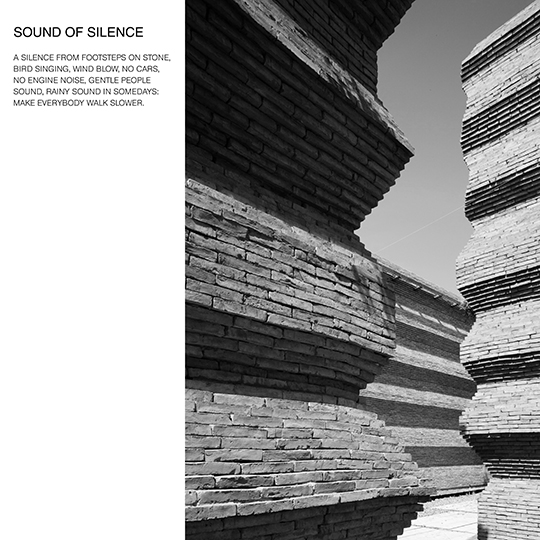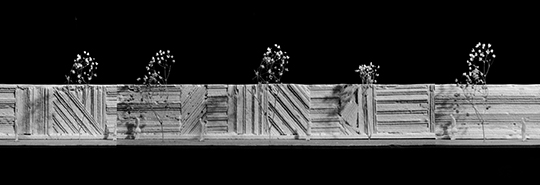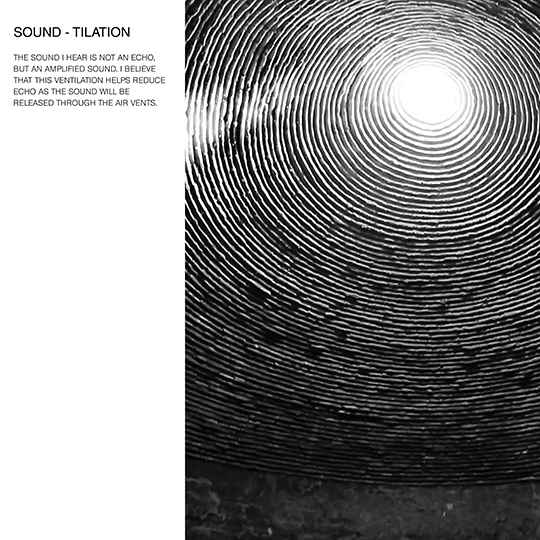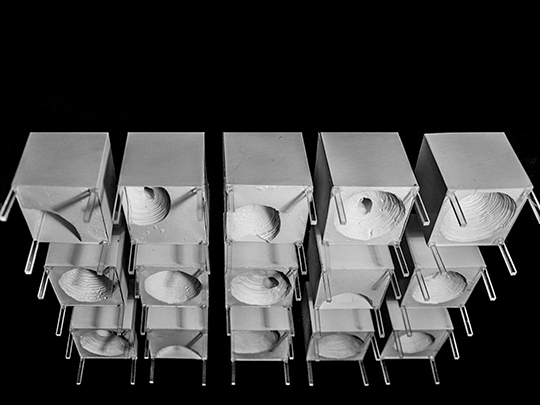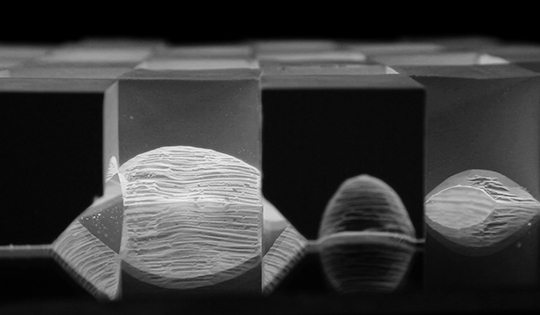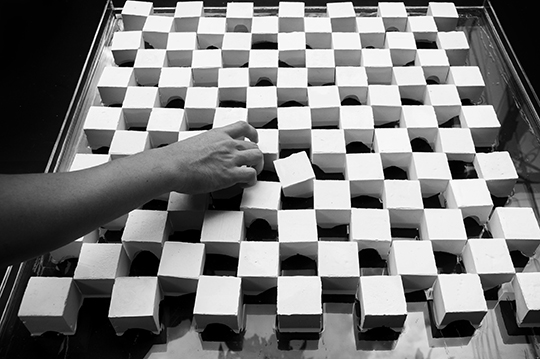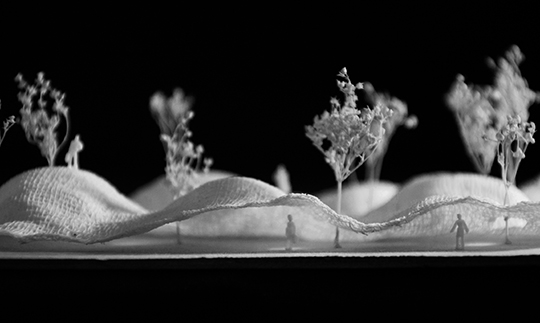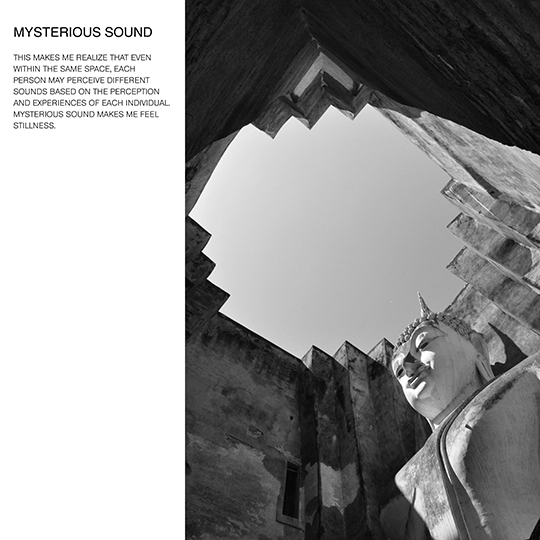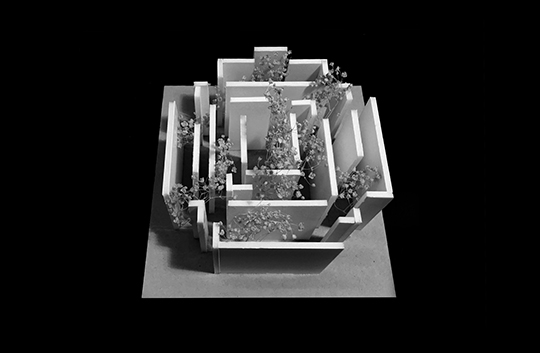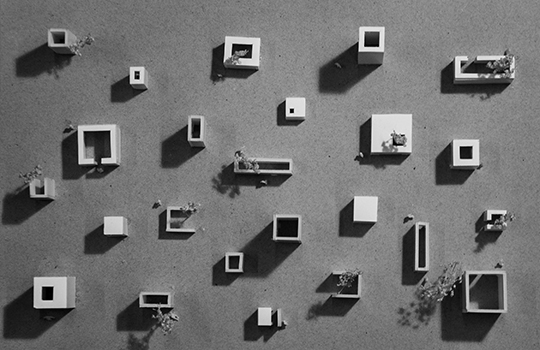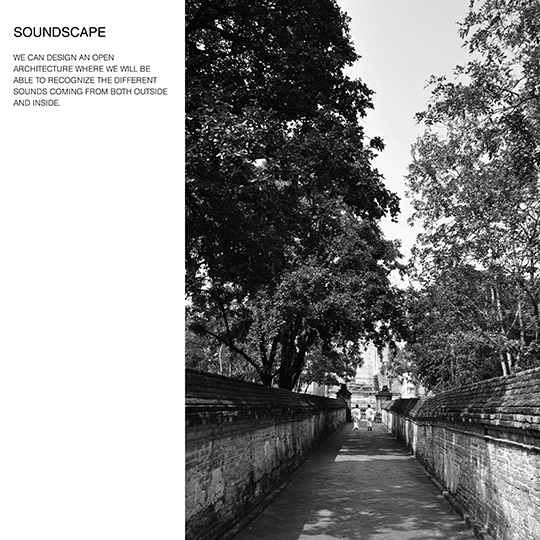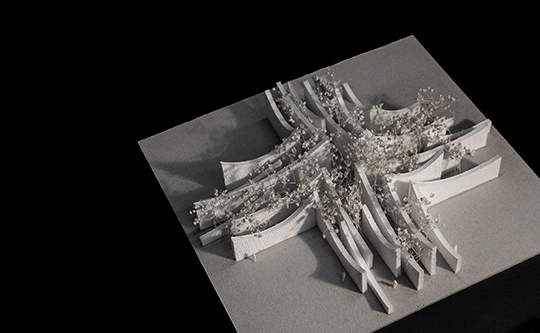SOUND BRICK
Sound Brick
Architecture is usually intended to be perceived by eyes. Most architects put great emphas is on (form) even though sound, invisible but tangible through hearing, is also a factor that creates environmental aesthetics for humans. The sound brick research, hence, offers a variety of sound designs and research approaches in architecture to discover the relationship of space, architectural compositions, and construction methods that contributes to different sounds in ancient brick constructions. The research also aims to present a new way to appreciate architecture through hearing in addition to sight. This will open a fresh perspective that helps enrich the meaning of the architecture to cover more than just function and beauty. In conclusion, different approaches in the sound design in various brick architectural works affect people’s perception of atmosphere, feeling, and emotion. The undulate patterns of walls, the masonry patterns, the heights and lengths of walls, the distances of space, the upward and sideward openings, the shapes of the areas whether they are square, sphere or gable, as well as the various positioning of walls such as parallel, perpendicular, or alternate, are all influential elements in sound aesthetics in different types of space. The sound can even link to the interior and the exterior of a certain architectural work. The link can be extended to wind, water, trees, people, and animals which are architectural context of each construction.
